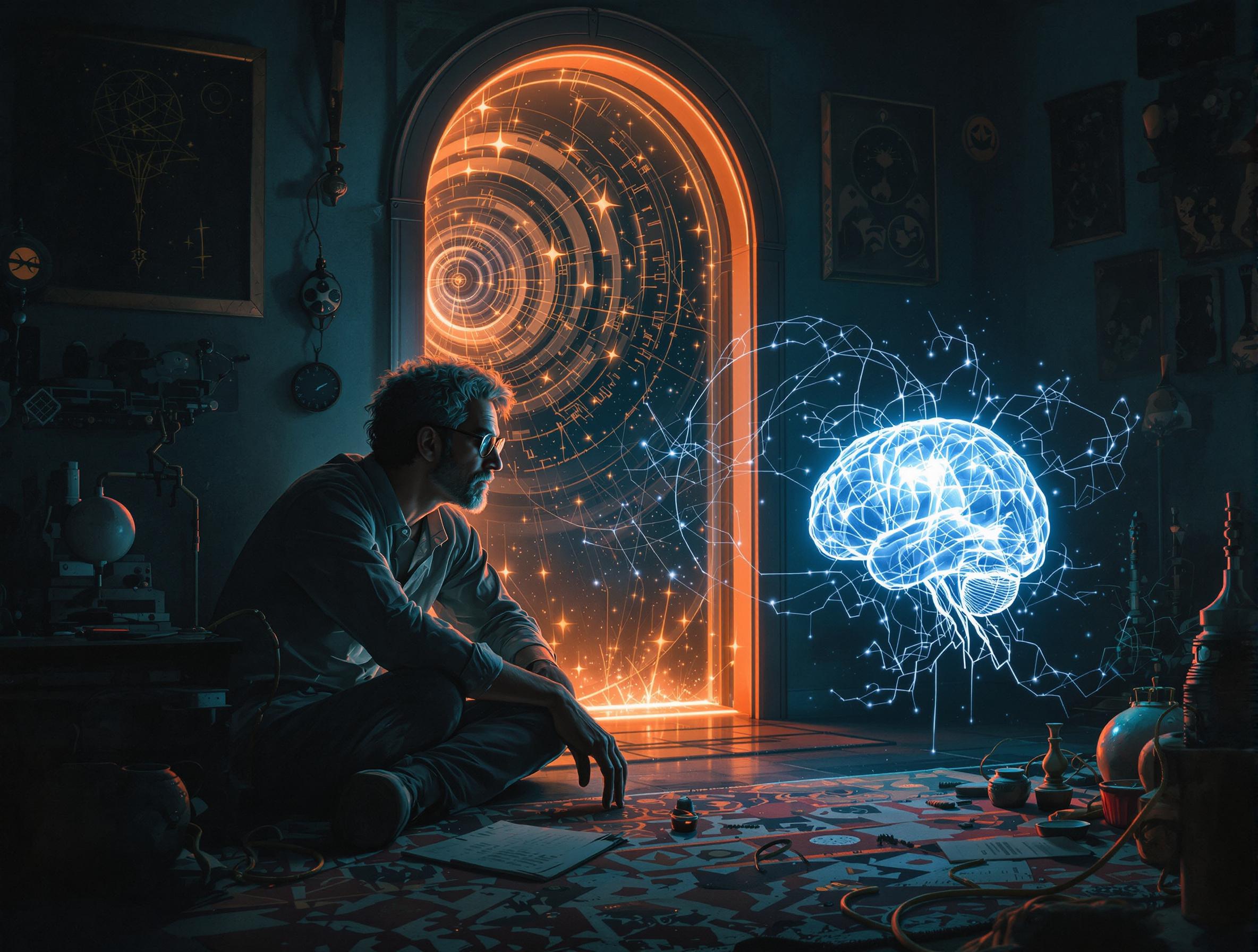Jacobo Grinberg: The Vanished Neuroscientist Who May Have Discovered a Parallel Reality
In December 1994, Jacobo Grinberg, a renowned Mexican neuroscientist, walked out of his lab in Mexico City and disappeared without a trace. No farewell note. No body. No answers. To authorities, it was a routine missing person case. But to those familiar with his research on consciousness, telepathy, and shamanic science, his vanishing became something else entirely—a mystery that challenges the very laws of reality. Some believe Grinberg was about to prove that the mind can shape the fabric of the universe. Others claim he entered another dimension. Sound familiar? It might, especially if you’ve watched Stranger Things.
Who Was Jacobo Grinberg?
Born in 1946 in Mexico City, Jacobo Grinberg Zylberbaum had an early fascination with the depths of human consciousness. After earning a degree in psychology, he pursued neuroscience studies in the U.S., completing a PhD at New York University. But unlike most scientists, he wasn’t satisfied with traditional Western paradigms. Upon returning to Mexico, he set out on a radical path: to merge science with mysticism.
In 1987, he founded the Instituto Nacional para el Estudio de la Conciencia, an independent lab where he explored telepathy, brain synchronization, and non-ordinary states of awareness. He also became involved with Pachita, a mysterious Mexican healer reputed to perform surgeries with the help of unseen forces.
The Syntergy Theory: Consciousness as a Reality-Generating Field
At the heart of Grinberg’s work lies his Syntergy Theory. He proposed the existence of an informational field—a sort of neural hologram—underlying all reality. According to this model, what we perceive as "reality" is not objective, but a mental construction structured by our brain interacting with this field.
In short: consciousness creates reality. This idea echoes quantum physics concepts, like the observer effect, and aligns with holographic universe theories. Grinberg believed that by altering the structure of neural activity, we could access hidden levels of existence.
Experiments Beyond the Veil
Among Grinberg’s most controversial experiments was his work on induced telepathy. Two individuals were placed in separate rooms with EEG machines. One received visual or auditory stimuli, the other did not—yet their brainwaves often synchronized. Grinberg described this phenomenon as "neural entanglement", anticipating ideas now explored in quantum neuroscience.
He also investigated the Space of Shabd, a concept drawn from Hindu mysticism describing a pure vibrational realm beyond matter. Grinberg believed that advanced meditators—and some shamans—could enter this space and even manipulate it.
The Day He Disappeared
In December 1994, Grinberg was scheduled to present his latest findings. He never showed up. Witnesses say he simply vanished—no activity on his bank accounts, no records of travel, no remains. His wife claimed he had "dissolved."
Gone were not only his notebooks and files, but also most records of his ongoing experiments. Was it a forced disappearance? A voluntary retreat into isolation? Or had he succeeded in entering the field he studied for decades?
Stranger Things: Coincidence or Hidden Homage?
If the story sounds like science fiction, that’s because it inspired it—literally. The parallels between Jacobo Grinberg’s life and the plot of Stranger Things are striking: a secretive lab, psychic children, government experiments, and a hidden dimension.
Though the creators of the show haven’t confirmed a direct influence, various documentaries, including The Secret of the Consciousness, suggest that Grinberg’s story has quietly echoed through creative circles for decades.
Science, Magic, or Dangerous Truth?
Today, Jacobo Grinberg’s legacy remains suspended between visionary science and modern myth. His writings are being rediscovered by researchers exploring the edges of neuroscience, quantum theory, and spirituality.
Was he a prophet? A rogue scientist? Or a mind that saw too much?
Perhaps his greatest discovery isn’t in any lab report, but in the question he left behind:
What if reality is not what we think—what if it’s exactly what we think?
Was Stranger Things Inspired by a Real Scientist?
Many believe that the story of Jacobo Grinberg might have inspired elements of Stranger Things. Like Eleven, Grinberg was involved in psychic experiments, telepathy research, and even worked with secretive institutions. The idea of the Upside Down, a hidden dimension accessed through the mind, parallels his syntergy theory and his studies on the Space of Shabd—a realm of vibrational consciousness beyond ordinary reality.
While the Duffer Brothers have not officially cited Grinberg, fans and theorists continue to explore this chilling possibility: Is Stranger Things based on a true story? Maybe... more than we think.
FAQ
Q: Is Stranger Things based on Jacobo Grinberg’s life?
A: While not officially confirmed, many elements in Stranger Things—such as mind experiments, government labs, and alternate dimensions—closely mirror the real-life work of Mexican neuroscientist Jacobo Grinberg, who mysteriously vanished in 1994.
Q: What is the Upside Down in real life?
A: Some theories connect the Upside Down to Grinberg’s idea of the informational field or Shabd space, where the mind can access hidden layers of reality.








Leave a Comment